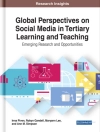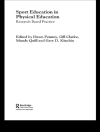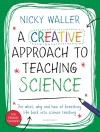Make learning visible in the early years
Early childhood is a uniquely sensitive time, when young learners are rapidly developing across multiple domains, including language and literacy, mathematics, and motor skills. Knowing which teaching strategies work best and when can have a significant impact on a child’s development and future success.
Visible Learning in Early Childhood investigates the critical years between ages 3 and 6 and, backed by evidence from the Visible Learning® research, explores seven core strategies for learning success: working together as evaluators, setting high expectations, measuring learning with explicit success criteria, establishing developmentally appropriate levels of learning, viewing mistakes as opportunities, continually seeking feedback, and balancing surface, deep, and transfer learning. The authors unpack the symbiotic relationship between these seven tenets through
- Authentic examples of diverse learners and settings
- Voices of master teachers from the US, UK, and Australia
- Multiple assessment and differentiation strategies
- Multidisciplinary approaches depicting mathematics, literacy, art and music, social-emotional learning, and more
Using the Visible Learning research, teachers partner with children to encourage high expectations, developmentally appropriate practices, the right level of challenge, and a focus on explicit success criteria. Get started today and watch your young learners thrive!
Cuprins
List of Videos
Acknowledgments
About the Authors
INTRODUCTION
WHAT WORKS BEST
VISIBLE LEARNING
THE POTENTIAL FOR IMPACT
WHAT WORKS BEST WHEN
HOW THIS BOOK WORKS
CHAPTER 1. TEACHING WITH CLARITY IN EARLY CHILDHOOD
FOUR-YEAR-OLDS AT WORK
VISIBLE LEARNERS
TEACHER CLARITY
SURFACE, DEEP, AND TRANSFER LEARNING
PROFILES OF FIVE EDUCATORS
INSIDE MS. DAVIS’S DISTANCE LEARNING CLASSROOM
CHAPTER 2. VISIBLE LEARNING IN EARLY CHILDHOOD PLAYFUL LEARNING
EFFECTIVE PLAYFUL LEARNING IN EARLY CHILDHOOD
MS. DEMCHAK AND SORTING
MS. BULLOCK AND OCCUPATIONS
MR. HEATON AND ANIMAL HABITATS
MS. DAVIS AND DISTANCE PLAYFUL LEARNING
TIPS AND CONSIDERATIONS FOR PLAYFUL LEARNING
CHAPTER 3. VISIBLE LEARNING IN EARLY CHILDHOOD MATHEMATICS
EFFECTIVE MATHEMATICS LEARNING IN EARLY CHILDHOOD
MS. DEMCHAK AND NUMBERS
MS. BULLOCK AND MEASUREMENT
MR. HEATON AND GEOMETRY
MS. DAVIS AND DISTANCE LEARNING IN MATHEMATICS
MATHEMATICS AND PLAYFUL LEARNING
CHAPTER 4. VISIBLE LEARNING IN EARLY CHILDHOOD LITERACY
EFFECTIVE LITERACY LEARNING IN EARLY CHILDHOOD
MS. DEMCHAK AND OUR NAMES
MS. BULLOCK AND LISTS
MR. HEATON AND ANANSI THE TRICKSTER SPIDER
MS. DAVIS AND DISTANCE LEARNING IN LITERACY
LITERACY AND PLAYFUL LEARNING
CHAPTER 5. VISIBLE LEARNING AND UNDERSTANDING THE WORLD IN EARLY CHILDHOOD
EFFECTIVE LEARNING TO UNDERSTAND THE WORLD IN EARLY CHILDHOOD
MS. DEMCHAK AND STEM CHALLENGES
MS. BULLOCK AND BEING A SCIENTIST
MR. HEATON AND MAPS
MS. DAVIS AND DISTANCE LEARNING TO UNDERSTAND THE WORLD
UNDERSTANDING THE WORLD AND PLAYFUL LEARNING
CHAPTER 6. VISIBLE LEARNING IN EARLY CHILDHOOD SOCIAL AND EMOTIONAL DEVELOPMENT
EFFECTIVE SOCIAL AND EMOTIONAL DEVELOPMENT IN EARLY CHILDHOOD
MS. DEMCHAK AND PERSPECTIVES
MR. HEATON AND GOAL SETTING
MS. DAVIS AND DISTANCE SOCIAL-EMOTIONAL LEARNING
SOCIAL AND EMOTIONAL DEVELOPMENT THROUGHOUT THE DAY
CHAPTER 7. VISIBLE LEARNING IN EARLY CHILDHOOD CREATIVE ARTS AND MOTOR SKILL DEVELOPMENT
EFFECTIVE ARTS AND MOTOR LEARNING IN EARLY CHILDHOOD
MS. DEMCHAK AND FAMILY PORTRAITS
MS. BULLOCK AND STORYTELLING
MS. DAVIS AND DISTANCE LEARNING IN ART, MUSIC, AND MOTOR SKILLS
ARTS AND MOTOR DEVELOPMENT IN PLAYFUL LEARNING
CHAPTER 8. KNOWING YOUR IMPACT: EVALUATING LEARNING PROGRESS
VISIBLE LEARNERS
EFFECTIVELY COMMUNICATING CLARITY FOR VISIBLE LEARNING
ENGAGING AND RIGOROUS TASKS FOR VISIBLE LEARNING
FORMATIVE EVALUATION FOR VISIBLE LEARNING
FEEDBACK FOR VISIBLE LEARNING
MS. DAVIS AND STUDENT-LED CONFERENCES IN DISTANCE LEARNING
CONCLUSION
Appendix: Effect Sizes
References
Index
Despre autor
John Hattie, Ph D, is an award-winning education researcher and best-selling author with nearly thirty years of experience examining what works best in student learning and achievement. His research, better known as Visible Learning, is a culmination of nearly thirty years synthesizing more than 2, 100 meta-analyses comprising more than one hundred thousand studies involving over 300 million students around the world. He has presented and keynoted in over three hundred international conferences and has received numerous recognitions for his contributions to education. His notable publications include Visible Learning, Visible Learning for Teachers, Visible Learning and the Science of How We Learn; Visible Learning for Mathematics, Grades K-12; and 10 Mindframes for Visible Learning.












